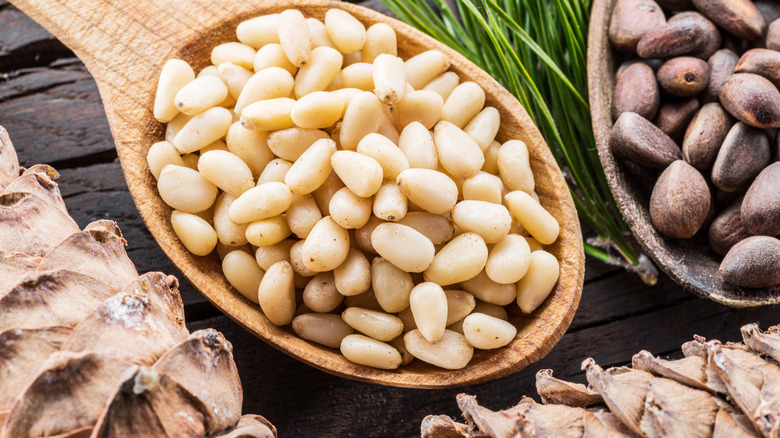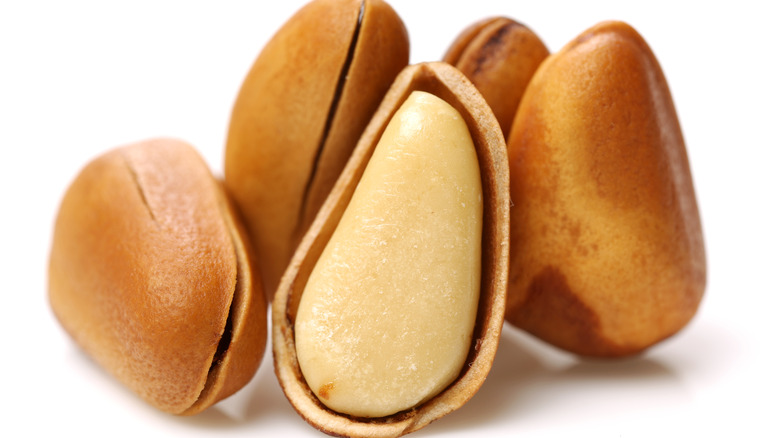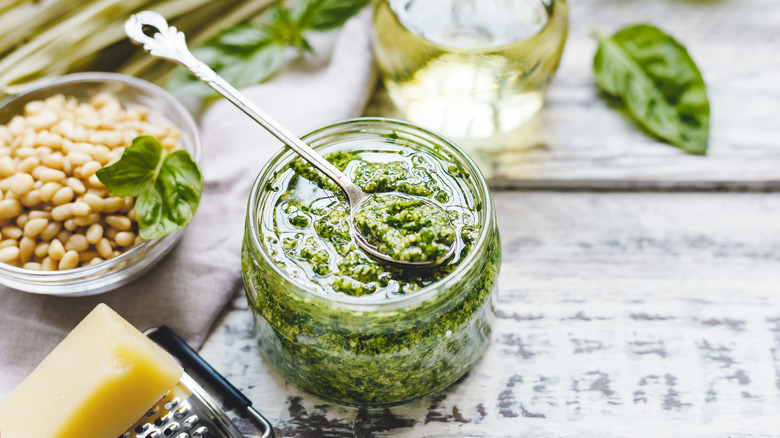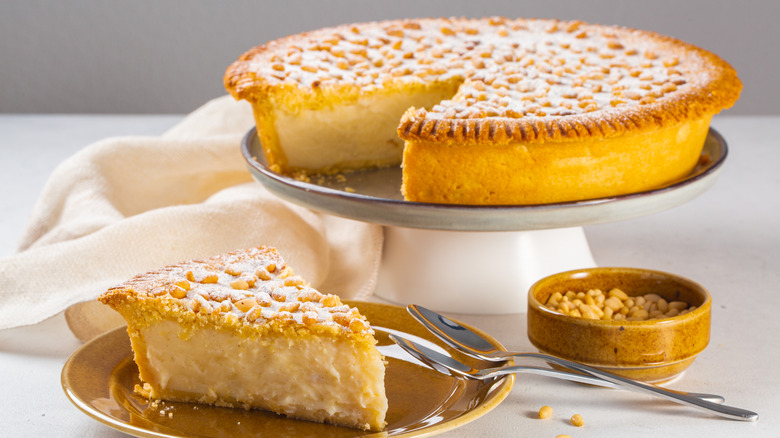Everything You Need To Know About Pine Nuts
Pine nuts are nuts that come from pine cones. The Spruce Eats shares that there are more than 20 varieties of pine trees that can produce pine nuts, with just four different types of trees producing the bulk of what we use. They include two from the Americas — the Mexican pinon and the Colorado pinion — along with the Italian stone pine, and the Chinese nut pine. And, before you ask why two are called pinons and the other two are not, Pinenut.com explains that only pine nuts from America get the unique moniker.
But pine nuts have truly been around forever. According to Wellness Resources, pine nuts are mentioned in the Old Testament of The Bible; there is evidence they were used during the Mesolithic period; and archaeologists unearthed pine nuts during their excavations of Pompeii. As with many foods, their use has evolved over time, but way back when, they were used for cooking and medicinal purposes. Wholesale Nuts and Dried Fruits shares that the pine nut was a staple for Greeks when it came to making stuffed grape leaves and the Chinese would use pine nuts to create delicate sweets. The staying power of this pale little oval nut is definitely impressive.
How are pine nuts harvested?
Fast forward to present day, and Giada De Laurentiis, among a host of other celebrity chefs, has used pine nuts to whip up a classic pesto sauce, as well as her famous pine nut cookies. Ina Garten uses them in couscous and Bobby Flay throws them into his green beans or tosses them in with his recipe for grilled avocados, cojita cheese and tomatoes. But if you've never used these nuts before you may be wondering how they are grown and what they taste like. Don't worry, we've got you covered.
First, The Spruce Eat explains that, while pine nuts are found in the seemingly ubiquitous pine cone, it is a long and nutty process before you can actually crack them open. It can take between 15 and 25 years before the trees begin making the seeds that contain said pine nuts. Once they do, it takes another 18 months before they are ready to harvest. Pine nut purveyors start the process of harvesting the seeds within 10 days of the pine cone starting to open. It's not easy either. Everything is done by hand, and while patience is a virtue, the cones are often put in burlap bags for 20 days and left in the sun to help the process along. The cones are then smashed to extract the pine nut seeds and the secondary shell is removed. Talk about a lot of work for a little nut, right?
What do pine nuts taste like?
All that hard work is worth it because pine nuts truly add a unique flavor to the foods they are married up with. They are often described as having a buttery flavor and soft, but crunchy texture. The Kitchn suggests that this is due to their high oil content. You might even be able to detect a faint pine taste, but it will be subtle, as these nuts are considered to be both mild and sweet to the taste buds. This makes them perfect for your pastas, pestos, and charcuterie boards, as well as for your favorite biscotti or Torta della Nonna.
While they can be enjoyed in their raw form, toasting pine nuts really draws out some of those undertone flavors, making them even yummier. Toasted pine nuts can really up the game of just about any recipe. Add them to your favorite vegetable or salad and it's like an entirely new dish. However, The Kitchn cautions that you will need to pay attention to these little nuts when you are heating them up or they can easily burn (and no one wants that). Because they take a lot of time and patience to harvest and bring to market, pine nuts are expensive. Which brings use to storing your precious pine nuts. The Kitchn says pine nuts can go stale fairly quick, so always be sure to keep them in an airtight container in your refrigerator or freezer.
Nutritional considerations and hazards
Pine nuts are delicious, but because of that high oil content, they are also high in fat. According to WebMD, one ounce of pine nuts, which they estimate to be a little over 160 of these little babies, contains 191 calories and 19 grams of fat, so if you choose to enjoy pine nuts, follow the Greeks motto of "Pan metron ariston" or everything in moderation. That said, pine nuts are also rich in nutrients. They are high in magnesium, iron, antioxidants, zinc, and protein, and are considered an excellent source of dietary fiber.
But beware of the dreaded pine nut mouth. If you have not heard of this phenomenon, it's worth noting. Per Berkeley Wellness, pine nut mouth is described as an after taste that is bitter and metalic and can last for as long as a few days to a whole week. And while some might think this is an allergic reaction, the site shares that the FDA has conducted tests and it is not. What causes it? The Spruce Eats suggests that this is mainly caused by pine nuts that come from a specific pine tree in China, but Berkeley Wellness says this theory has yet to be proven.



